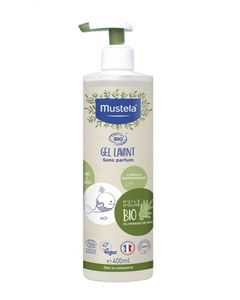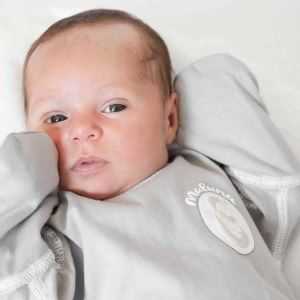A “baby skin”, everyone dreams of achieving this perfection of softness. However, their thin and fragile skin exposes toddlers to certain problems. Sensitive to temperature variations, friction and the elements (wind, sun), baby’s skin is fragile and young parents are sometimes distraught.
If your baby has redness on the skin, it could be due to many factors. Zoom in on the possible causes of this redness and on the possible solutions.
1- baby has red itchy patches
What you observe
Baby has dry patches of skin that form scabs. These patches are red and swollen, sometimes oozing. They cause severe itching.
Location of plaques
On baby’s cheeks or behind baby’s ears. For older children, the redness is more at the level of the folds (elbows, knees …).
What it can be
It could be eczema, the common name for atopic dermatitis. The red patches of eczema are commonly associated with dry skin. Eczema often appears on a favorable hereditary ground in an allergic family setting. It is not uncommon for these plaques to bleed. Its evolution is done in spurts. These can spontaneously regress and then reappear. If baby is in pain, he may be restless and sleep poorly.
One in five babies has eczema. This disease is absolutely not contagious.
What to do ?
See a doctor or a dermatologist who will certainly prescribe corticosteroids if the eczema is very embarrassing, painful or disabling for the baby.
Emollient creams (which soften the skin) are often a good solution to soothe baby’s skin (Xemose, Xeramance, Lipikar …) but will not allow healing.
Little help that can help: the anti-scratch pajamas that will prevent bleeding and superinfection and help with its healing. This Maluna pajamas available on Amazon is fitted with mittens and all areas regularly affected by eczema are protected by additional fabric patches. From birth size to 5 years old, 49 €.
© Maluna
For older children, Mustela also offers a Stelatopia soothing underpants for atopic-prone skin. It has an encapsulated formula 100% of natural origin. it is found in size 6-12 months or 12-24 months.
To learn more about allergies in babies.
To avoid: washcloths, soaps and perfumes which are too aggressive.
Good to know: Baby’s skin will mature around 10 years old. It is often at this age that eczema disappears.
2- Baby has redness in the folds
What you observe
In its folds, folds and small bulges, baby has bright red skin, sometimes oozing.
Location of plaques
The folds of the thighs, the double chin, the genital areas but also the areas of friction of the layers (belly, folds of the groin).
What it can be
The redness is probably due to the fact that baby is too hot. He is a little too covered or his diapers are not changed frequently enough.
What to do ?
- Change baby more frequently
- Clean it well
- Dry your skin thoroughly
- Put an ointment to relieve it and repair its skin
3- Baby has red pimples on the buttocks
What you observe
Small red pimples appear and then amalgamate into red patches and irritations in the baby’s genitals as well as on his buttocks. The redness can sometimes go as far as bleeding and there may be small blisters on the baby’s bottom.
Location of plaques
On the baby’s sex or buttocks.
What it can be
It is most definitely a diaper rash with or without mycoses. This kind of erythema appears when the buttocks macerate too long in a wet diaper but also in children on antibiotics.
What to do ?
Go see your doctor who will prescribe a hydrocortisone or antifungal cream for you.
- No need to increase the thicknesses of cream
- Avoid too aggressive wipes and favor the toilet of the seat with liniment. Easy to do yourself and economical, it would be a shame to miss it.
4- Baby (less than two months old) has red patches on the “T zone” of his face
What you observe
Your newborn baby has red patches on his face.
Location of plaques
On the infant’s “T-zone”: above the eyes and on the wings of the nose. The baby’s skull is also sometimes subject to this redness.
What it can be
It is certainly a sebaceous dermatitis (or seborrheic dermatitis). It affects newborns from birth to about two months.
The explanation: at the time of birth, baby undergoes a hormonal surge, the skin secretes sebum and therefore becomes more oily, which causes this redness.
What to do ?
Avoid using products that are too aggressive for baby’s skin. This would have the opposite effect to that expected. Degreasing baby’s skin with soap will activate this skin manifestation.
Don’t panic, this phenomenon will disappear on its own around the baby’s two months old.
5- Baby has very red cheeks
What you observe
Baby has very red cheeks (and is often grumpy).
Location of plaques
On the cheeks. This manifestation is sometimes associated with very damaged buttocks.
What it can be
Baby has presumably teething.
What to do ?
For redness of the cheeks, nothing should be done. Treat baby’s bottom and relieve teething pain.
6- Baby has red patches on his body
What you observe
Baby has red patches and a fever.
Location of plaques
Arms, stomach, back, legs, face … the plaques can be located anywhere on baby’s skin.
What it can be
Have you thought about a viral patient? Baby may be vaccinated against measles and rubella (the MMR Vaccine stands for Measles-Mumps-Rubella), there are many diseases that manifest as flare-ups. We can cite roseola, scarlet fever or chickenpox.
What to do ?
Go see your pediatrician or your doctor so that he can identify the disease as quickly as possible and treat your baby quickly.
7- Baby has small itchy swollen patches
What you observe
Small red patches a few centimeters wide and slightly swollen appear on the baby’s skin, around these “blisters” the skin is red … They seem to itch a lot and these small patches can sometimes meet in much more surfaces. expanses.
Location of plaques
The plaques can appear anywhere on a baby’s body.
What it can be
Your baby may develop urticaria.
What to do ?
Go see your doctor. Normally, the hives should go away on their own. Applying an antihistamine cream prescribed by your doctor will soothe baby.
Your baby has sensitive skin: some tips
Since your baby has sensitive skin, preferably wash his laundry with a detergent suitable for babies such as Le Chat bébé and skip the fabric softener for the moment.
Read also :
Baby has fragile skin
Teething, no more hassle
Baby fever: how to react?
To wash it, use products that are gentle on its skin

© Mustela
Mustela organic washing gel
Shower product surgras Gilbert Laboratories
Uriage Universal Emolient Xemose Cream
